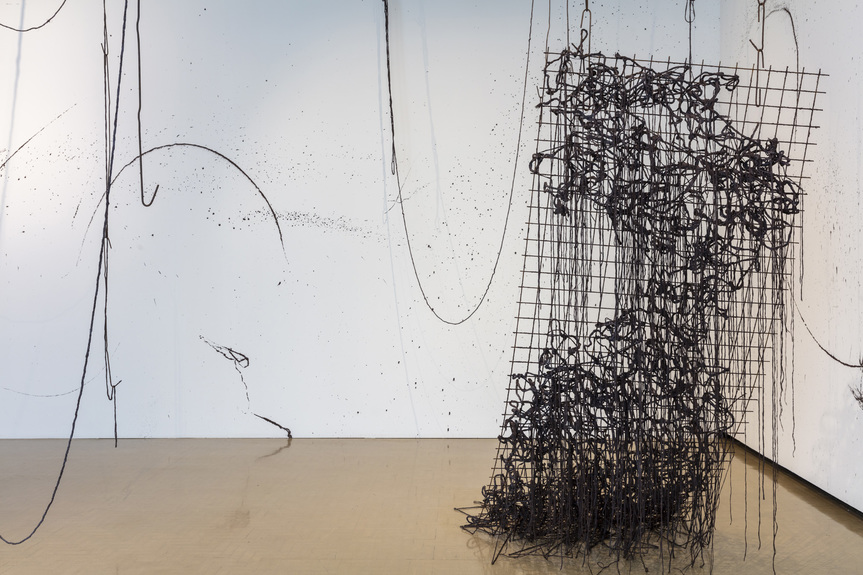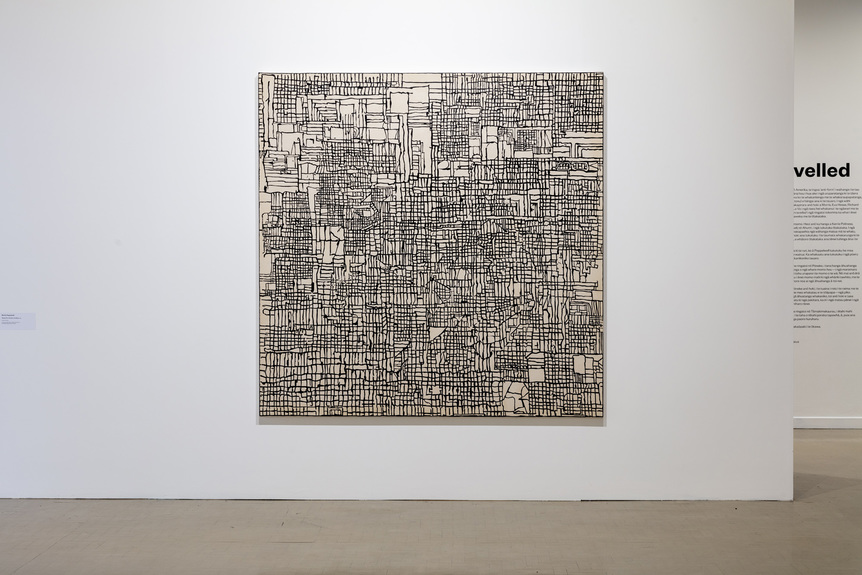-
From Current Issue
-
- Editor’s Letter Fire in the Heart
- Reviews I Gusti Ayu Kadek Murniasih
- Reviews 11th Seoul Mediacity Biennale: “One Escape at a Time”
- Dispatch Networked China
- One on One Monira Al Qadiri on Yukio Mishima
- Essays The rise of independent art spaces in pandemic-era Shanghai
- Features Tuan Andrew Nguyen
- Table of Contents
- Web Exclusives
- Archive
- Subscribe

R
E
V N
E
X
T
Installation view of “Unravelled,” at City Gallery Wellington Te Whare Toi, 2020. All images courtesy City Gallery Wellington Te Whare Toi.
“Unravelled,” at City Gallery Wellington, presented five Antipodean artists whose practices connect with what the American conceptualist Robert Morris called “anti-form.” Emerging in reaction to Minimalism, the style deployed formal structures that tended toward decomposition and randomness rather than rigid composition.
In this tradition, the strict geometries of Minimalism are collapsed in many of the displays. Kirsty Lillico, for instance, reinterprets architectural floorplans using carpet repurposed from Modernist buildings, improvising new shapes that overlap, fold, and tumble in strips of rough-hewn fabric. Meanwhile, Isabella Loudon’s Platforms (2019) takes twine soaked in cement, hung and draped to harden into random patterns, and lays them on top of the steel mesh grids used in construction to reinforce concrete. Leaning against the walls and suspended from the ceiling to evoke some kind of macabre formalist abattoir, the minimalist grids are penetrated and undermined by the chaotic twine structures, balanced between solidification and collapse, being and not-being.
Sharing a material connection with Loudon’s use of steel, Peter Robinson undermines its connotations of permanence through reduction and imbalance. Purple Haze (2018), a tangle of brilliant-purple anodized aluminum rods hovering close to the wall, seems to vibrate with potential energy, while Swarf (2018), a small pyramidical mound of metal shavings that certainly started as a molded rectangular block, appears on the verge of losing its shape through natural erosion. Though diminutive in size, these works nevertheless dominated the space through the uncertain tension that they generated, ever verging toward disintegration. Robinson’s recent practice has a tendency to take manufactured materials that typically appear in highly regulated forms, as in the construction and shipping industries, and atomize them.
Both Kerrie Poliness and Martin Poppelwell take the modernist grid as their point of departure and apply it to wall-based works. Poppelwell contributed one of his signature graphic-style paintings, Study for Ancient Artifact (2019), made up of wobbly, hand-drawn lines that invite comparisons to a city map, computer circuit boards, and woven textiles. Poliness’s vibrant Blue Wall Drawing 1 (2007–19)—which arguably stole the show—takes the sharp ruled lines of Sol LeWitt and stretches and warps them across the architecture, as if attempting to replicate the shifting coordinates of spacetime within the limited frame of the wall. The displayed instruction manual for how to execute this drawing was instructive to an audience who would otherwise be unaware of the mathematical precision and planning of Poliness’s process.
Inhabiting one gallery with a mere handful of works, “Unravelled” felt like a minimalist offering where a more maximalist approach, both in scale and didactic scope, would have been welcome and appropriate for an investigation of messy formalism in contemporary Australian and New Zealand art.
Wei Hao Qi is ArtAsiaPacific’s Shanghai desk editor.
“Unravelled” was scheduled to be on view at the City Gallery Wellington Te Whare Toi until April 13, 2020. Please check the exhibition web page for up-to-date information in light of Covid-19.
To read more of ArtAsiaPacific’s articles, visit our Digital Library.


















